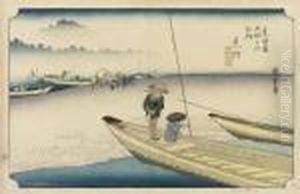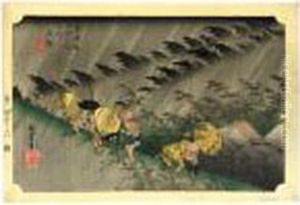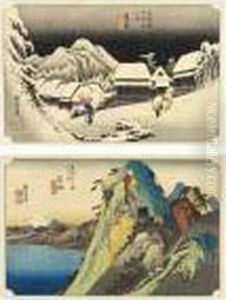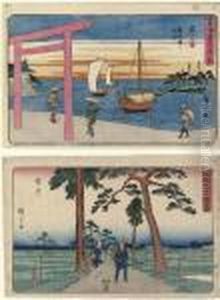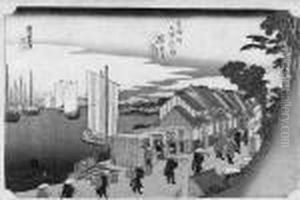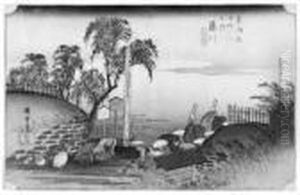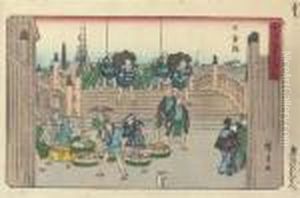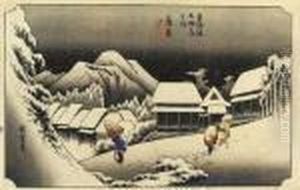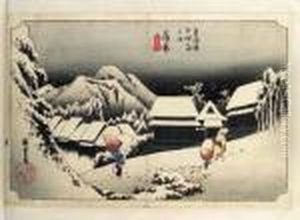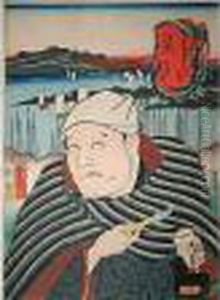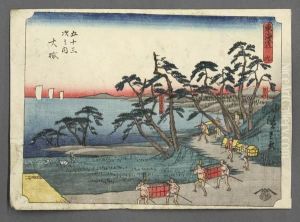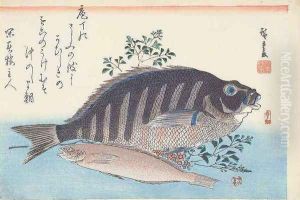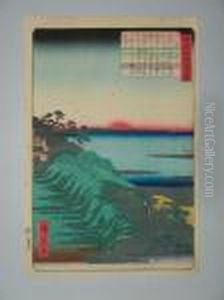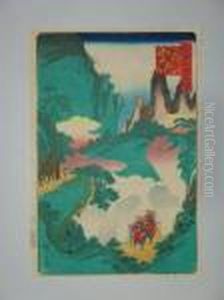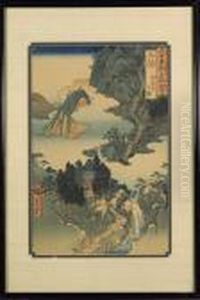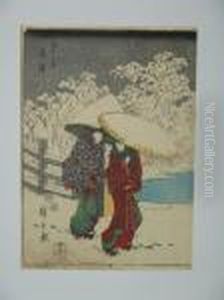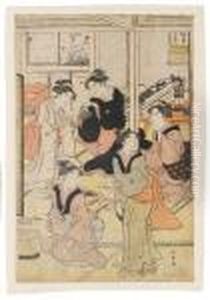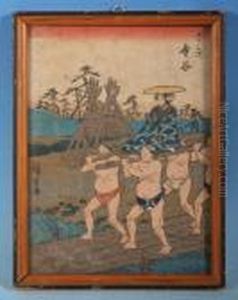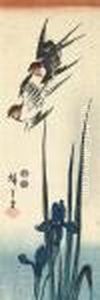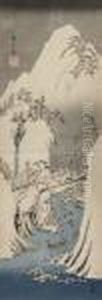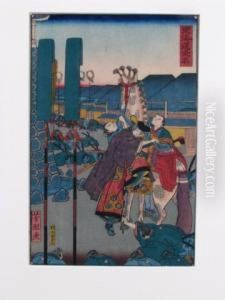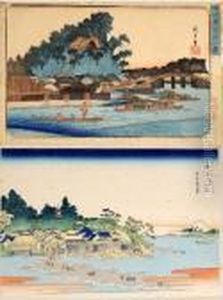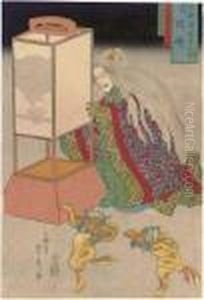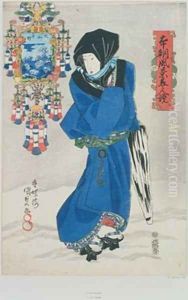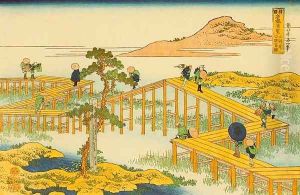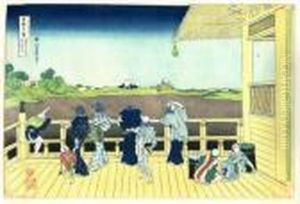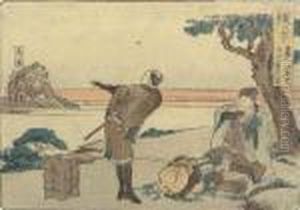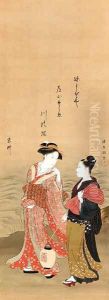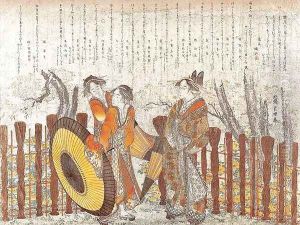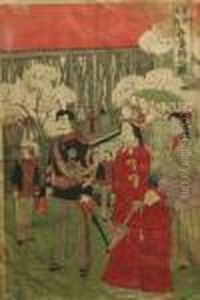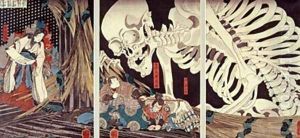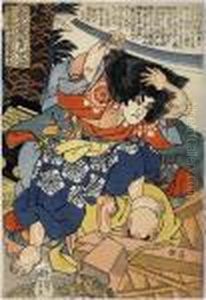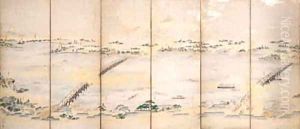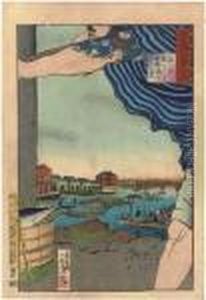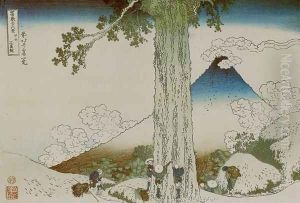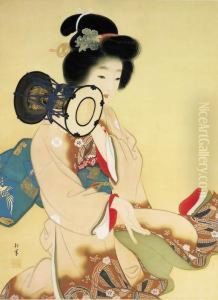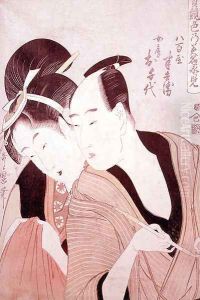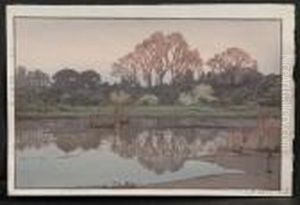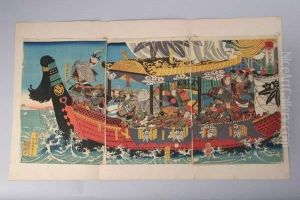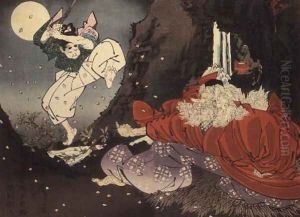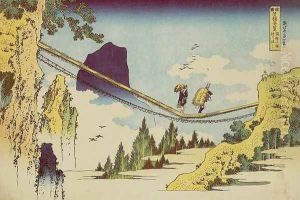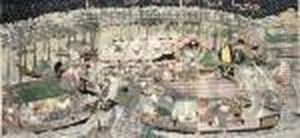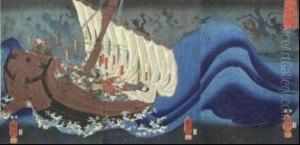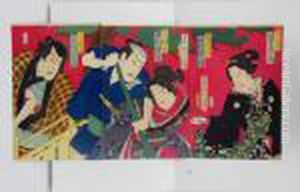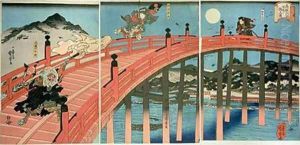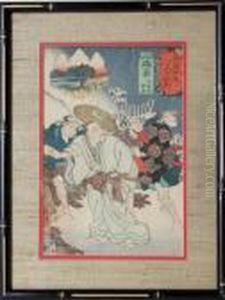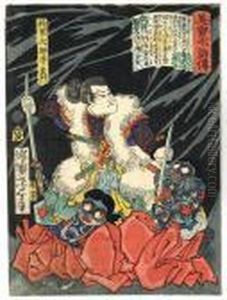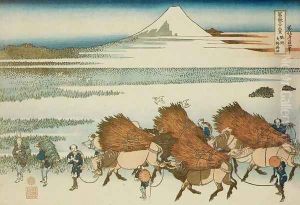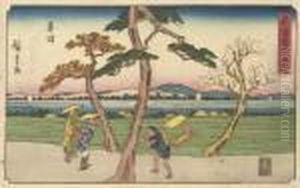





Tokaido Gojusan Tsugi No Uchi
-
About Reproduction
Bring the timeless beauty of Utagawa or Ando Hiroshige's Tokaido Gojusan Tsugi No Uchi into your home with a handmade oil painting reproduction. Carefully recreated on canvas by skilled artists using traditional techniques, this piece captures the delicate brushwork, subtle light, and vibrant color of the original masterpiece. With museum-level quality and rich texture, it brings elegance and artistic depth to any space. Enjoy free shipping and make this masterpiece a part of your personal collection.
-
Original Description
Tōkaidō Gojūsan Tsugi No Uchi ("The Fifty-Three Stations of the Tōkaidō") by Utagawa Hiroshige (also known as Andō Hiroshige) is a masterpiece of ukiyo-e woodblock prints, capturing the poetic essence of Edo-period Japan. The series depicts the 53 post stations along the Tōkaidō road, the vital highway connecting Edo (Tokyo) and Kyoto, blending serene landscapes with lively human activity. Hiroshige’s delicate gradations of color—misty blues, soft greens, and warm earth tones—evoke a sense of tranquility and fleeting beauty (mono no aware), while his asymmetrical compositions and dramatic fore-grounding reveal influences from Western perspective. This work exemplifies meisho-e (famous-place pictures), elevating travel scenes to a refined art form. Alongside Hokusai’s Thirty-Six Views of Mount Fuji, Hiroshige’s series became iconic of Japanese art’s golden age, later inspiring Western Impressionists like Van Gogh and Monet with its atmospheric depth and everyday lyricism.
For modern decor, Hiroshige’s prints harmonize beautifully with minimalist, Japandi, or rustic-interior styles. Choose a high-quality reproduction in medium-to-large dimensions (e.g., 24"x36") to highlight intricate details—ideal above a neutral-toned sofa or as a focal point in a study. Pair the artwork with natural materials like bamboo frames, linen textiles, or low wooden furniture to echo its organic palette. In offices, select misty landscapes (e.g., Shōno station’s rain scene) for calming energy; vibrant prints like Kanbara’s snowscape add contrast to monochrome spaces. Balance Hiroshige’s soft hues with muted walls (sage, beige) or amplify their drama against deep indigo. Smaller prints work well in gallery walls mixed with sumi-e calligraphy or ceramic accents, bridging traditional and contemporary aesthetics. Avoid overcrowding; let the art’s quiet storytelling shine.
-
Lead Time & Shipping
When you order this oil painting replica, it typically takes 2-3 weeks to paint. If the artwork is more complex, it might need a little more time to ensure the best quality. Once it's ready, we'll send you a photo for your approval. After you give the green light, we'll ship it to you for free.
-
Return & Refund
We believe in the quality of our hand-painted oil painting reproductions, and your satisfaction is our priority. If for any reason, you are not completely satisfied with your purchase, we offer a 45-day return policy. You can return your artwork within 45 days of receipt and receive a full refund. Please note that the artwork must be returned in the original packaging and in the same condition as it was received.





















